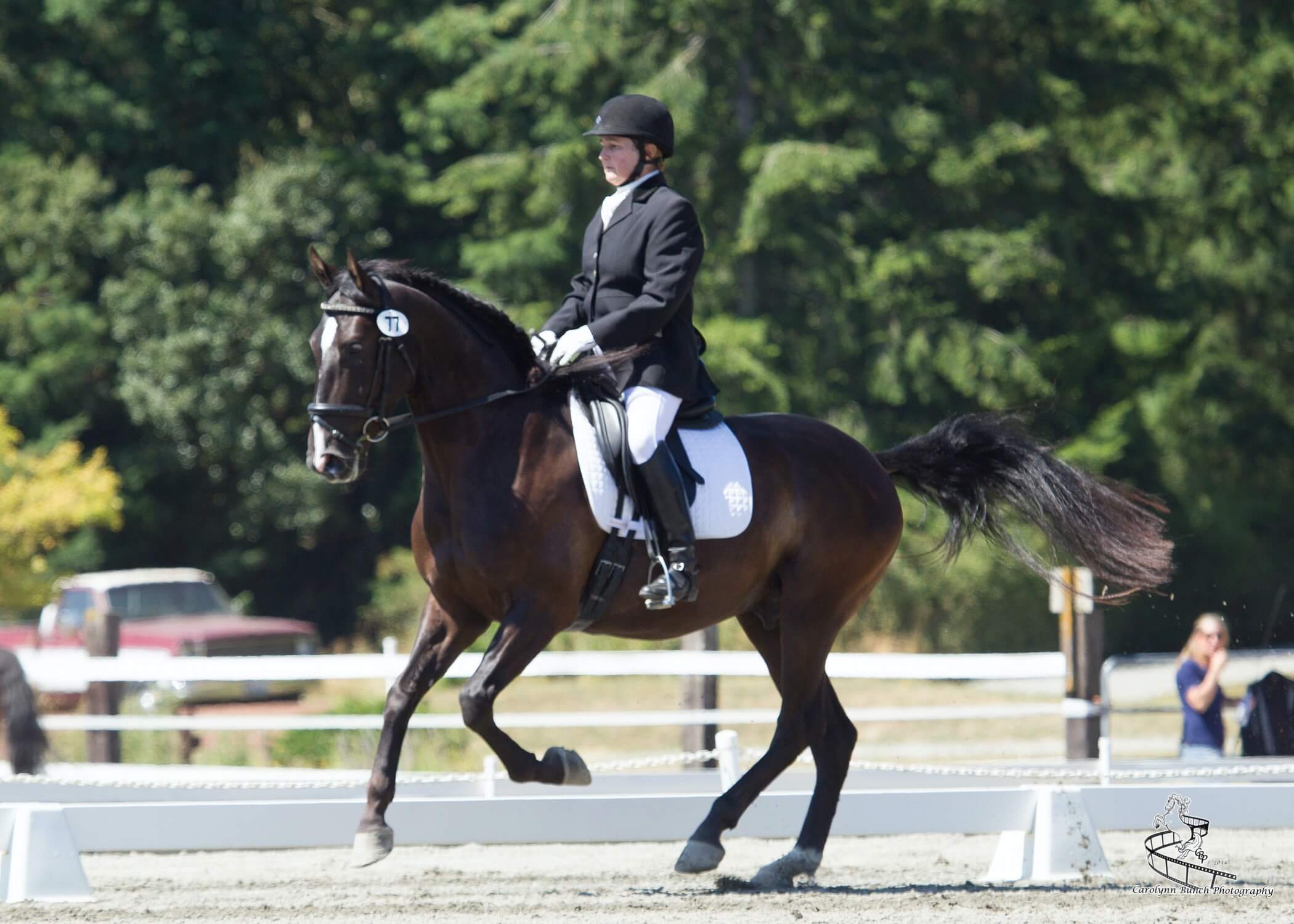What is your name and the name of your business?
Sally Saur of Saur Training Stable
What do you do?
My husband, Roger Saur, and I give a limited amount of lessons. We are available for clinics and training as well. We give clients lessons on their own horses that are usually in training with us.
How did you get involved in horses as a professional?
As a youth and young adult, I rode and showed my own horse. After marrying Roger, it made sense to relinquish my amateur status and become a trainer. I’ve been in this business for 31 years.
Where do you live?
We live in Everson, Washington and train out of a private facility there.
Who do you feel influenced you the most in your equestrian journey and why?
This is an easy question to answer! My husband Roger has influenced me the most. His knowledge of training and care of horses has no limits; he has impeccable timing with his hands and legs, and with praise and discipline. He has fit halter horses and trained many horses in Western pleasure, reining, cutting and working cow horse. I am so grateful to have his wisdom, although there may be times when I play the “wife card” and don’t want to listen. Ha!
How does your previous career as a school teacher help you in your current role?
I’m so lucky to have this background! I can break things down in simple steps, be specific and adapt to the learner’s style of learning and skill level. I feel like I have the right amount of patience and high expectations while remaining positive and encouraging. This applies to horses and people. I love this quote, “To inspire people, don’t show them your superpowers. Show them theirs.”
What disciplines/sports or aspects of the industry are you involved in? Why did you choose that aspect of the horse business?
I am currently training, coaching, and showing horses in ranch riding. It’s the fastest growing discipline in horse showing at this time.
I’ll admit I turned my nose up at it at first. It wasn’t Western pleasure and it wasn’t reining. It seemed too easy. Two very good friends, Katy Radder and Nancy Hinkelman, started showing in ranch riding and were having so much fun. I had a Western pleasure mare that really wasn’t making it as a pleasure horse, so I started redirecting her toward ranch riding. I was hooked! The mare was happy!
Ranch riding is challenging—long patterns, no cones or markers, and several gait transitions. Each maneuver has its own score. This means your walk is just as important as your lead change!
What aspect of your business is the most enjoyable to you?
I’m with animals every day and with people who are motivated and eager to please. I bring my dog to work with me and hang with my husband. My group of ladies who I coach are fierce and fun. We show hard and we play hard.
Are you actively competing?
I spent many years at the breed show level, predominantly Paint, competing and coaching in Western pleasure and hunter under saddle. Currently I’m competing with my ranch riding mare, Pale N Busy, a 2017 mare that is registered with the AQHA and APHA. Most of the shows I attend are Quarter Horse shows and occasionally an open show.
What clubs or organizations are you involved in?
I am a member of AQHA, APHA, Northwest Reining Association, Pacific Northwest Ranch Riding Association, and Washington State Quarter Horse Association.
What do you look for in a ranch riding horse?
I want it to be pretty, have excellent movement, and be pleasant and happy in the show ring. The smartest way to do this is to buy a reiner that maybe isn’t on its A game and train it a bit like a pleasure horse. The hard part is done—it changes leads, stops, and turns around. The next job is to teach it to jog, long trot and side-pass, or go over poles.
What’s your training philosophy?
Horses look for a leader. It’s important to be that leader for optimum performance and safety. There are times when repeated practice is necessary and times when the trainer needs to mix it up. I heard Bob Avila say to strive for 1% improvement per day. One percent seems doable. At the end of 100 days…. shazam, you got it! I love that idea.
Where do you hope to be in five years?
I see myself retired from training and coaching. I will continue to show and train my own horse. After three years, I will be eligible to become an amateur again. I will be an amateur when I am 70… ouch!
See this article in the March/April 2022 online edition:

Kim Roe grew up riding on the family ranch and competed in Western rail classes, trail horse, reining, working cow, and hunter/jumper. She trained her first horse for money at 12 years old, starting a pony for a neighbor.
Kim has been a professional dressage instructor in Washington state for over 30 years, training hundreds of horses and students through the levels. In recent years Kim has become involved in Working Equitation and is a small ‘r’ Working Equitation judge with WE United.
Kim is the editor of the Northwest Horse Source Magazine, and also a writer, photographer, and poet. She owns and manages Blue Gate Farm in Deming, Washington where she continues to be passionate about helping horses and riders in many disciplines.






